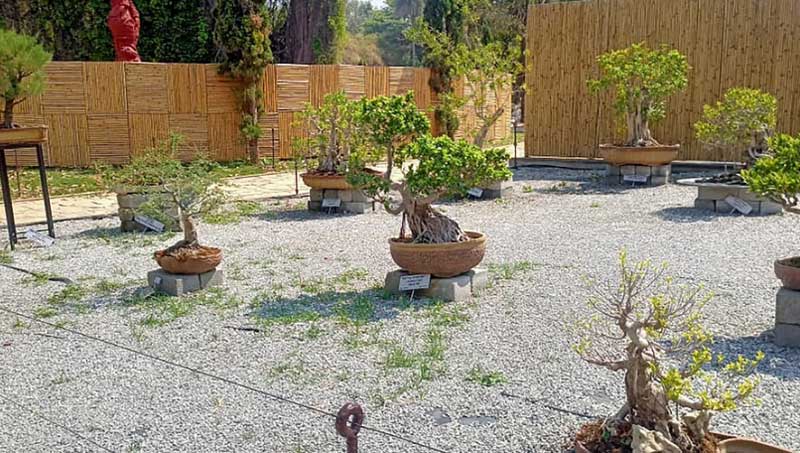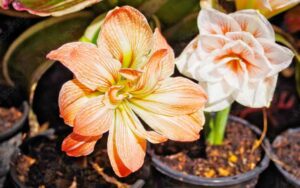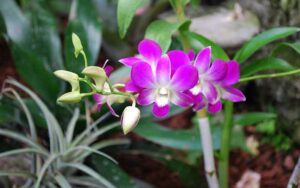Beauty in a bowl : Micro Lotus

Dr. Sheena. A (Assistant Professor)
Instructional Farm, College of Agriculture, Vellayani
Thiruvananthapuram, Kerala
Miniatures and dwarfs are always the gardeners’ favourite. The tiniest lotus that can be grown is the micro lotus. They can be grown in little bowls and are also known as bowl lotus. The first miniature lotus variety was ‘Spark’ developed in China.
Depending on their size, lotus is classified into four groups. Large species measure above 36 inches, medium types range in size from 19 to 36 inches, small types range from 7 to 18 inches, and miniatures/bowl lotus are 6 inches and smaller. Lotus plants of the same kind grown in larger containers will typically be larger since they have more room to grow. True miniatures are genetically dwarfs and will remain dwarf even if grown in large containers. The bowl lotus produces small leaves, small flowers, and rhizomes. Bowl lotus can be either true miniatures grown in bowls, or small type lotus planted in bowls as they eventually behave like miniatures due to the reduction in growing space, precisely like a bonsai plant. Mangala Patum, Liang Li, New Star, Budha Seat 13, Little Green Micro, Lady Binglei, Affection 16, Red Tulip, Grand Master, Little Longevity Star, and Amiry Camelia are some of the lotus varieties which can be grown in bowls.

Micro lotuses grow best in containers that are 6 inches tall and 12 inches in diameter. If you are adept at cultivating lotus, you could even grow them in cups of 3-inch diameter. Choose a small container or ceramic bowl for your plants and fill it with goat manure, vermicompost, or farmyard manure. Along with it, a little bone meal should be given. Fill two thirds of the pot with clay soil or backyard soil. A good quality micro lotus tuber or a lotus stem with two to three nodes cut off can be planted after the soil has been lightly moistened. With your hand, make a tiny indentation in the soil. Place the tuber into the indentation with the growing tip pointed toward the centre of the pot. Take care not to damage the growing tips. Pouring water into the pot should be done carefully to avoid disturbing the planting media. Keep the pot in the sunlight. A minimum of six hours a day sunlight should be required for blooming. During flowering, these pots can be positioned on balconies and sit outs. It is challenging to grow lotus as a purely indoor plant because of its dependence on sunlight.

Because it is planted in tiny pots, once the water runs out, the plant will quickly dry out. Make sure the water in the pot doesn’t dry out. Immersing the micro lotus bowl to a large container will ensures continuous hydration and controls temperature increases. When there is a bloom, the bowl can be taken out and can be kept at our favourite places to enjoy its beauty. Any fertiliser that contains phosphorus, such as Di Ammonium Phosphate, Mono Ammonium Phosphate, or 19:19:19, can be applied once every two weeks with at the rate of quarter teaspoon per pot. It is important to remove dried flowers and foliage periodically.
Bowl lotus do not produce as many blossoms as other lotus since they are tiny plants and can only grow in a small amount of potting soil. The number of blooms each variety produces can differ. However, micro lotus blooming in pretty bowls are a real eye-catcher. Private space for gardening is becoming increasingly scarce as our population migrates from rural living to the skyscrapers of the thriving cities. Many of the urban gardens today are found on residential balconies. Plants such as bowl lotus are perfect for these smaller urban gardens.
Bowl Lotus Seeds : fact or falsehood?
On Facebook, WhatsApp, and online trade platforms, there are advertisements for bowl lotus seeds for sale. There are active online seed sales posts for Dutch hybrid lotus, blue lotus, and bonsai lotus. Many individuals fall for this con after seeing altered images of blue lotuses, brown lotuses, and lovely bowl lotuses that were obtained from other sources. In-depth instructions on how to germinate seeds will be provided. The seed will germinate too. But what you get is not the bowl lotus, but the ordinary lotus. Most bowl lotus species don’t produce large number of seeds. It is best to buy genuine bowl lotus seeds from reputed growers. It is a cross pollinated plant, thus there will be variation in the seedlings that grow from them. If you want to grow the true bowl lotus, go for tubers, not for seeds.

















